Tate Britain has rehung its art collection: What can we learn?
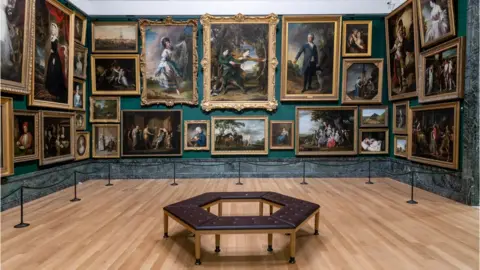 Tate/Eugenio Falcioni
Tate/Eugenio FalcioniThe Tate Britain gallery in London has unveiled a complete rehang of the world's greatest collection of British art.
More than 800 works by over 350 artists span six centuries. Its director, Alex Farquharson, says they "want to show that art isn't made in a vacuum".
So what can the works in one of our national collections tell us about Britain and its history?
The story of British art is the story of Britain
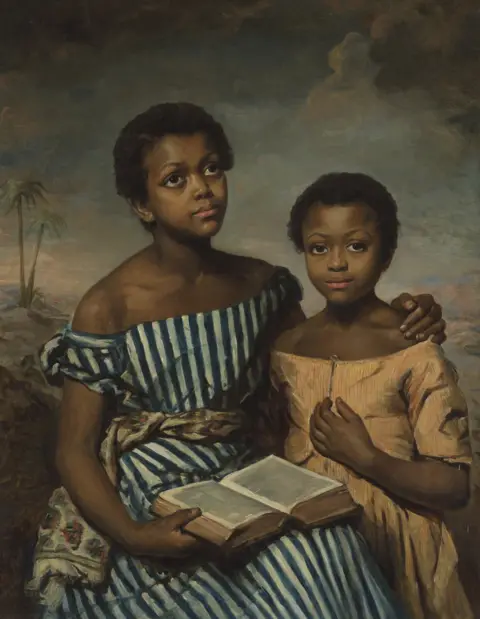 Tate/TB Keith
Tate/TB KeithTate's galleries are still laid out chronologically, from the 1500s to the present day. But the works are now linked to great moments in Britain's social and political history (wars, urbanisation, migration, revolution). We learn in an early room called Court Versus Parliament 1640-1720 that the artists on show were thriving at a time of huge turbulence: civil war, the execution of Charles I and the birth of party politics.
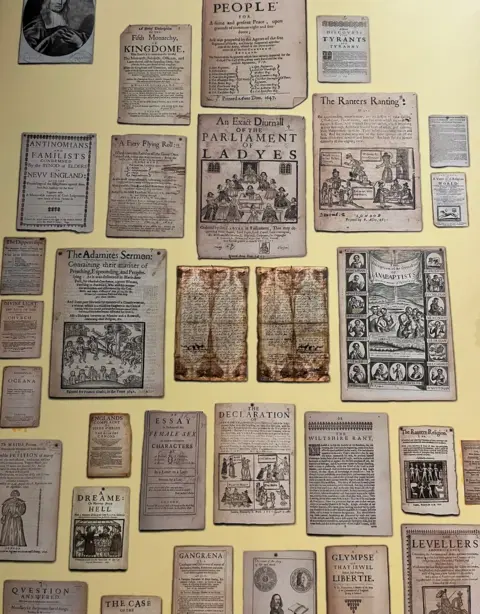 Tate
TateAlongside the portraiture, there's now a new commission by Nils Norman that reflects the birth of protest from that time. You might have heard of the Ranters and Levellers, whose pamphlets adorn a wall - but did you know about the Adamites? Their main demand seems to have been for humans to go naked (to bring them closer to Adam and Eve's pre-fallen state).
More women artists
Tate Britain has been investing in art by women to redress the balance for modern times. The earliest works on display, by Joan Carlile, Mary Beale and Anne Killigrew, date back to the 17th Century.
Carlile was one of the first British women artists ever to work professionally. Only around 10 portraits by her have been identified. Beale's success as an artist made her the main breadwinner for her family.
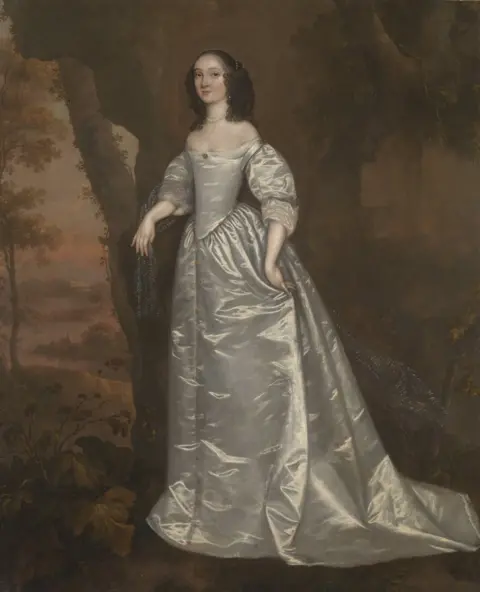 Tate
TateFarquharson says women artists have been "unfairly marginalised". Other notable historic female artists highlighted in the collection include Emily Sargent (who painted alongside her more famous brother John Singer Sargent) and Annie Swynnerton. Half of the living artists on display at Tate Britain are now women, and there are also more works by artists of colour.
 Tate Britain
Tate BritainA 'more truthful' account of history?
Tate Britain came in for criticism for its labelling of a Hogarth show in 2021, which Sunday Times critic Waldemar Januszczak described as "wokeish drivel".
The new rehang aims to offer more context to the works to provide "a more truthful account of history", says Farquharson. George Stubbs' Haymakers from 1785 shows a beautiful scene of rural workers. Tate Britain's label now includes a reminder that such idealised images of labour "rarely depict its harsh realities".
A painting depicting Caribbean life in the 18th Century by Agostino Brunias shows enslaved and free women of African descent dancing.
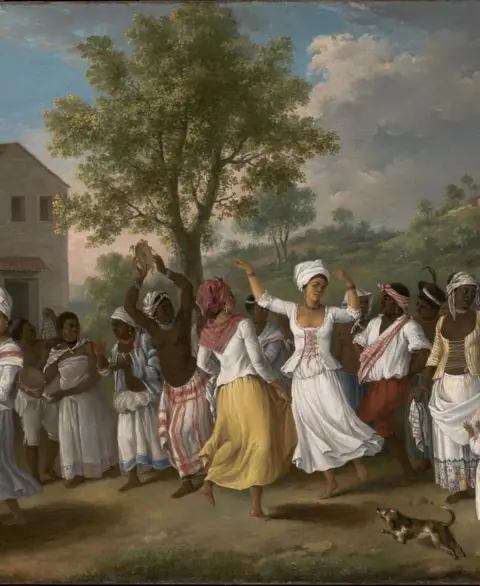 Tate
TateBrunias, says the label, mainly painted appealing images of plantation life for plantation owners. "Any reference to the forced labour and violence underpinning this is erased, as are his patrons' roles in this oppression."
Farquharson says the painting is "deliberately misleading" and meant for propaganda because it presents a "highly idealised picture of slave-owning society".
Do Tate's labels offer greater insights or diminish the art on show? It no doubt depends on your perspective, but to me, they felt like an extra layer of history.
Art for the crowds
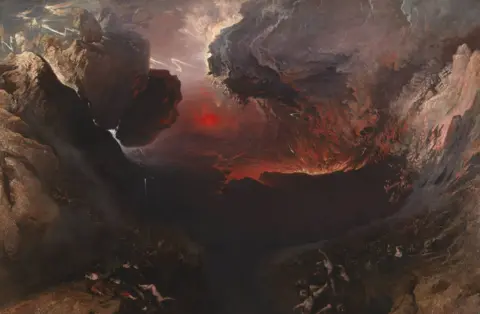 Tate
TateIn Victorian Britain, art attracted huge audiences as the emerging middle classes began to have money and leisure time. It was an era when Acts of Parliament and wealthy donors helped open public galleries with free entry. Some paintings became world famous.
These include John Martin's apocalyptic The Great Day of His Wrath. Martin was originally a coach painter from the north-east of England who began creating art to supplement his wages. After his death in 1864, this painting - part of a triptych - travelled around the world, thrilling crowds from New York to Sydney. It was the blockbuster movie of its day.
Technical advances influenced art
Just as technical advances have had an impact on the art of today, we learn how they changed the art being made in the 19th Century. The invention of tubes of paint, as well as faster drying paint and collapsible easels, allowed artists to explore faster, more spontaneous ways of painting, often outdoors 'en plein air'. The expansion of the railway network also made it easier for people to get out into the countryside to paint.
In the 1870s, what was at that point a radical art movement - Impressionism - aimed to capture 'the painting of the moment' by observing the fleeting effects of light and weather.
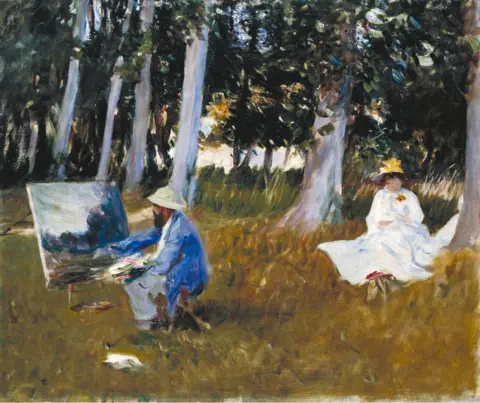 Tate
TateWho's in, who's out?
The rooms are still stacked full of favourites, from Van Dyck, Gainsborough, Hogarth and Constable to Hockney, Rego, Bowling and Riley (and if you're missing Waterhouse's Lady of Shalott, it's on loan to Falmouth and will be back on display when it returns).
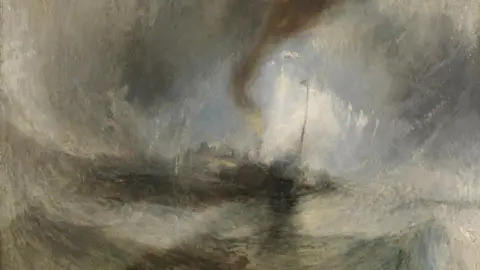
For those who associate Tate Britain with Turner, these rooms remain as awe-inspiring as ever. We learn that, having been picked out by art critics as "one to watch" in his late teens, he became the artist journalists loved to hate. Responding to his hazy landscapes, one explained that "he is the painter not of reflections, but of immediate sensations".
Ever committed to his craft, did you know Turner claimed to have asked sailors to lash him to a mast for four hours so he could observe the power and volatility of a storm for one of his paintings?
Choppy waters of now?
The final room - chronologically - is called The State We're In, 2000-Now. Artists of different generations have been working at a time of upheaval, whether Brexit, Covid, a cost of living crisis, the war in Ukraine or the social movements of Black Lives Matter and Me Too.
If Tate Britain is asking us, through its rehang, to reflect on the history of Britain through six centuries of art, what can we take away from these works?
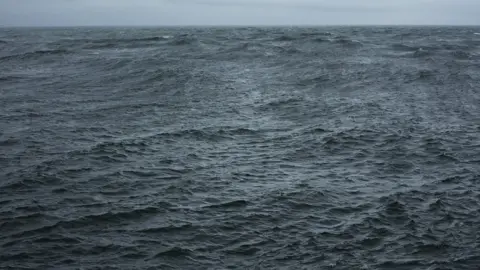 Tate Britain
Tate BritainTwo vastly different works depict the sea - Wolfgang Tillmans' detailed photograph of the waves and Lubaina Himid's reworking of a James Tissot painting in which she has two black women gazing from the deck of a boat off the Portsmouth coast.
Are these at least a nod to Britain, an island nation, and the choppy waters of our times?
